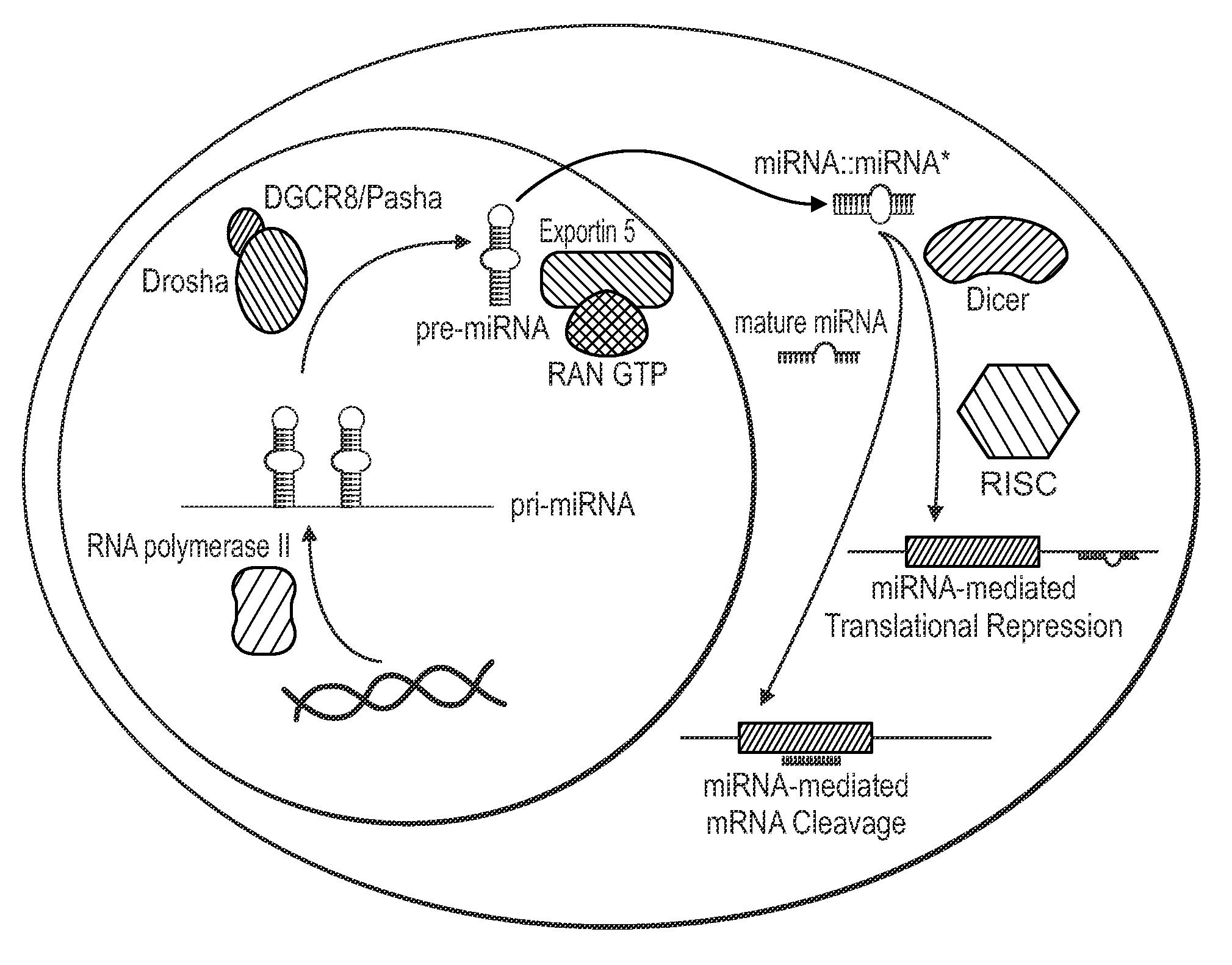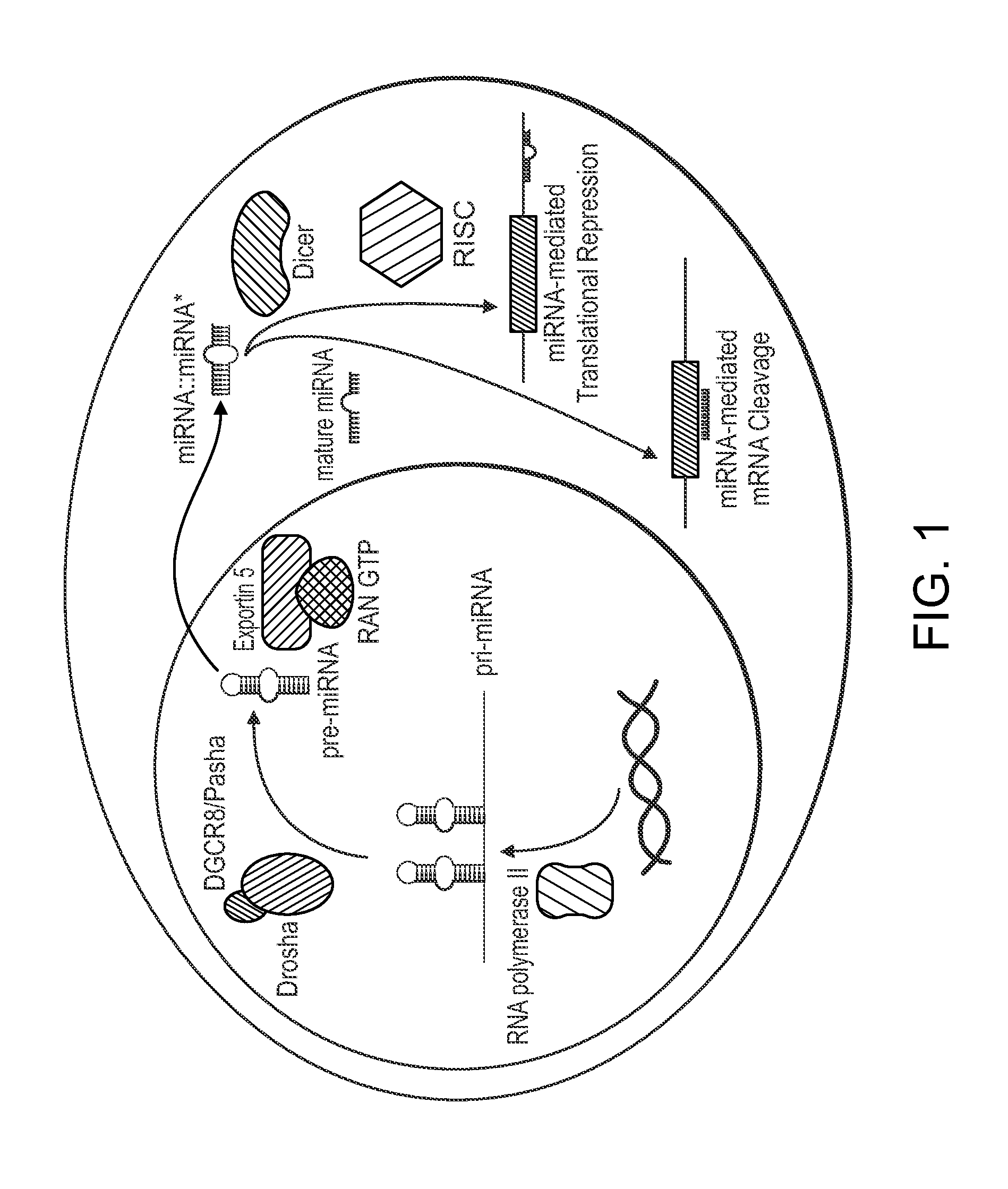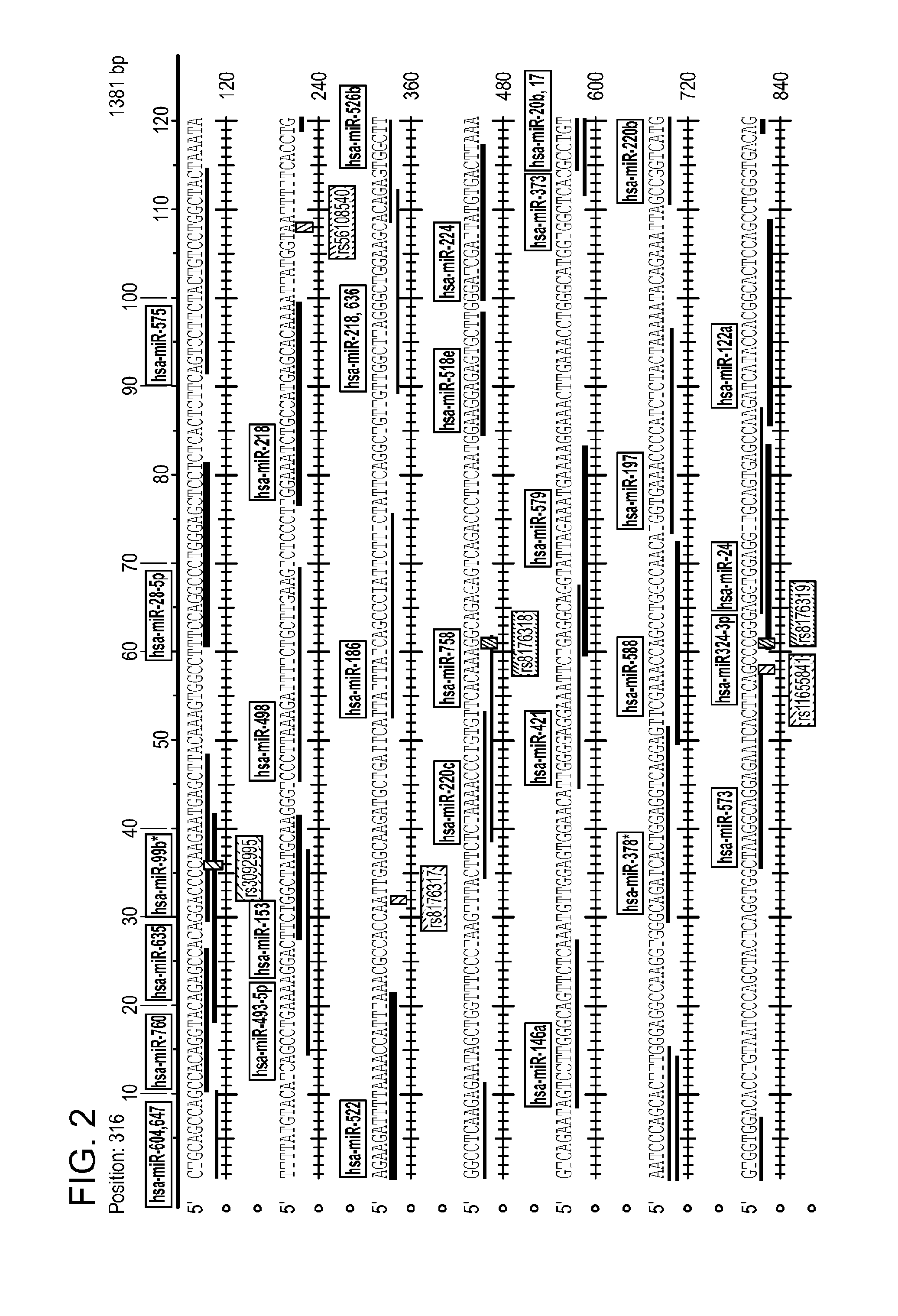Single nucleotide polymorphisms in brca1 and cancer risk
a single nucleotide polymorphism and cancer risk technology, applied in the field of cancer and molecular biology, can solve the problem of relatively few options available for predicting the risk of developing cancer
- Summary
- Abstract
- Description
- Claims
- Application Information
AI Technical Summary
Benefits of technology
Problems solved by technology
Method used
Image
Examples
example 1
Identification of SNPs in Breast and Ovarian Cancer Associated Genes that could Potentially Modify the Binding Efficacy of MiRNAs
[0172]Clinical and molecular classification has successfully clustered breast cancer into subgroups that have biological significance. The categories of subgroups are 1) ER+ and / or PR+ tumors, 2) HER2+ tumors, and 3) triple-negative (TN) tumors (Perou, C. M. et al. Nature 2000. 406, 747-52). The ER+ and / or PR+ and HER2+ tumors together are most prevalent (75%), with the triple negative tumors accounting for approximately 25% of breast cancers. Unfortunately, the triple negative phenotype represents an aggressive and poorly understood subclass of breast cancer that is most prevalent in young, African American women (<40). This subclass has a worse 5-year survival than the other subtypes (72% versus 85%).
[0173]DNA was collected from primary tumors in 355 cancer cases and 29 control individuals from Yale for this study. Of these DNA samples, 206 are from the ...
example 2
Evaluation of Sequence Variations in miRNA Complementary Sites within BRCA1 Using Tissue from Breast and Ovarian Tumors, Adjacent Normal Tissue and Normal Tissue Samples
[0179]BRCA1 has a highly conserved 3′ UTR of 1381 nucleotides. The 3′ UTR has 16 known SNPs. Nine of these SNPs are located in predicted miRNA binding sites and 4 of these 9 are located in predicted seed region binding sites. However, among these 16 SNPs, only 3 SNPs (rs3092995, rs8176318, and rs12516) have been found in the sequenced DNA samples thus far. Additionally, one novel SNP (SNP1) has been identified that resides in a predicted miRNA binding sites. Of note, this SNP has only been found in one patient, both in tumor and adjacent normal tissue. The results are reproducible (FIGS. 2 and 3). Of the four SNPs that have both been identified by sequencing and have predicted miRNA binding sites, two of these (rs3092995 and rs12516) are located in the seed regions of predicted miRNA binding sites (FIG. 3). None of t...
example 3
Prevalence of BRCA1 SNPs in Local Versus Global Populations
[0182]FIG. 4 shows the genotyping results for BRCA1 3′UTR from the global library of 46 World populations, including 2,472 individuals. As shown in FIG. 4, rs8176318 and rs12516 are almost always inherited together in the general population. Excluding the African ethnicities they are found in 31.6 and 31.7% of the population respectively. Additionally, rs3092995 is extremely rare through most of the World. Excluding African ethnicities, rs3092995 is on average not found in the population. These two interesting trends do not hold true for the African populations however. Within the African populations (There are 10, From the far left of the chart, Biaka Pygmy to Ethiopian Jews), rs3092995 is found in 10.2% of the populations and rs8176318 and rs12516 are at a decreased likelihood of being inherited together. It appears that when rs8176318 and rs12516 are not inherited together, rs12516 is always at a higher prevalence than rs...
PUM
| Property | Measurement | Unit |
|---|---|---|
| Fraction | aaaaa | aaaaa |
| Fraction | aaaaa | aaaaa |
| Fraction | aaaaa | aaaaa |
Abstract
Description
Claims
Application Information
 Login to View More
Login to View More - R&D
- Intellectual Property
- Life Sciences
- Materials
- Tech Scout
- Unparalleled Data Quality
- Higher Quality Content
- 60% Fewer Hallucinations
Browse by: Latest US Patents, China's latest patents, Technical Efficacy Thesaurus, Application Domain, Technology Topic, Popular Technical Reports.
© 2025 PatSnap. All rights reserved.Legal|Privacy policy|Modern Slavery Act Transparency Statement|Sitemap|About US| Contact US: help@patsnap.com



